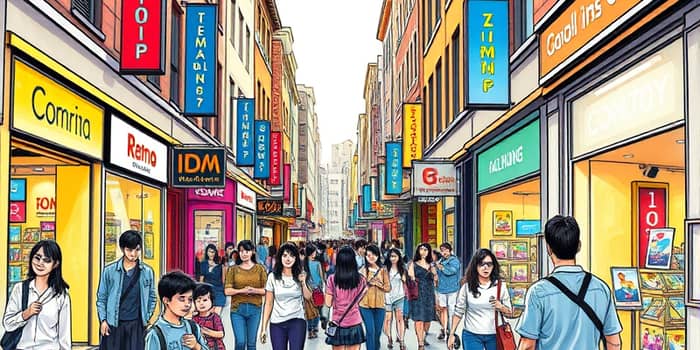
After a turbulent period defined by closures and distress filings, a renewed energy is sweeping through retail corridors. Consumers are once again gravitating toward physical stores, easing pressure on vulnerable brands and real estate markets alike.
In 2024, the sector witnessed unprecedented highs in 2024 as nearly 20 major chains—from Party City to Joann—filed for bankruptcy protection. Many of these were “repeat offenders,” while others were new entrants unprepared for shifting market dynamics. Yet Moody’s Ratings signals a softer wave of filings in 2025, noting that access to capital markets improved for at-risk borrowers.
This shift reflects a capital-structure “flush out,” whereby the weakest operators have already exited the stage. For the remaining players, balanced debt loads and improved lending conditions underpin a more stable landscape heading into the coming year.
By Q3 2024, foot traffic in prime street-retail districts returned to pre-pandemic foot traffic levels, and projections show an upswing beyond those benchmarks in 2025. Discount and dollar stores initially drove growth, but as consumer sentiment strengthened, specialty home and lifestyle retailers began recapturing attention.
According to Placer.ai, in-store visits rose 0.4 percent year-over-year in 2024, translating to renewed confidence in experiential shopping. The ICSC also reports that opening a physical location can boost a retailer’s digital revenues by nearly 7 percent, underscoring the importance of digitally influenced retail sales in today’s omnichannel environment.
To harness this momentum, retailers are rethinking formats and engagements. Many are crafting immersive in-store brand experiences—mixing live demonstrations, interactive displays, and community events to differentiate from purely online competitors.
These approaches not only drive footfall but also strengthen brand loyalty and upsell opportunities.
As competition heats up for prime sites, rents have climbed dramatically—9 percent in the Americas since 2021. Many retailers are pivoting to alternative retail districts with lower rent, clustering alongside niche operators to create new destination hotspots.
Where availability in flagship corridors remains tight, secondary high streets and suburban plazas offer attractive economics and fewer leasing hurdles. Well-crafted lease negotiations and flexible terms can further mitigate risk, granting retailers agility in uncertain markets.
Despite positive trends, challenges persist. Categories centered on discretionary and big-ticket goods face ongoing headwinds as discretionary spending remains under pressure. Cooling inflation and stable interest rates may improve consumer budgets, but prudent scenario planning is essential.
Retailers and landlords should consider:
The slowdown in bankruptcies is a beacon of hope, signaling that the worst of the sector’s turmoil may be behind us. Yet the path forward demands creativity, financial discipline, and unwavering focus on customer experience.
By embracing omnichannel synergy, strategic real estate decisions, and innovative in-store engagements, retailers can convert renewed foot traffic into lasting growth. For landlords, fostering partnerships and flexibility will ensure that retail spaces remain vibrant and profitable.
As 2025 unfolds, the industry stands at a crossroads—poised to write a new chapter of resilience and reinvention or risk repeating past mistakes. The rise of in-person shopping offers both a lifeline and a challenge: to transform the traditional retail model into an experience that captivates, delights, and endures.
References













